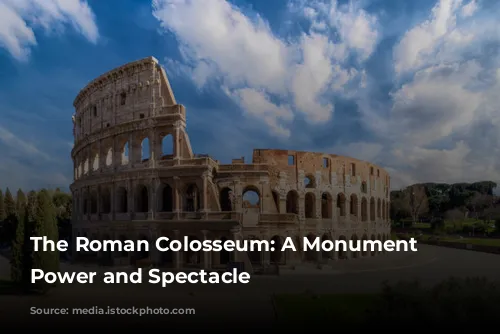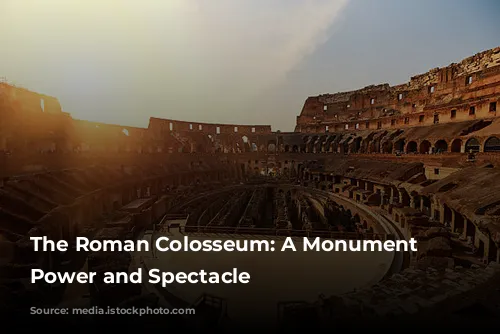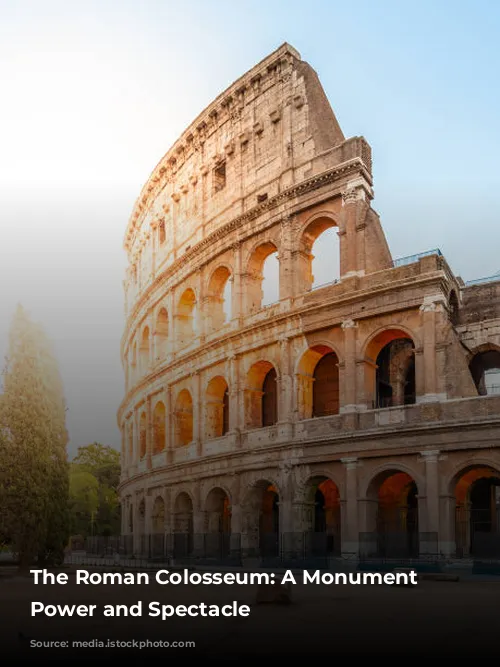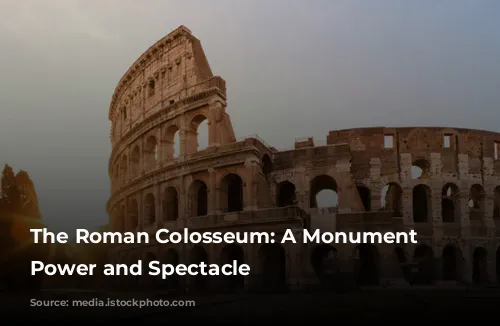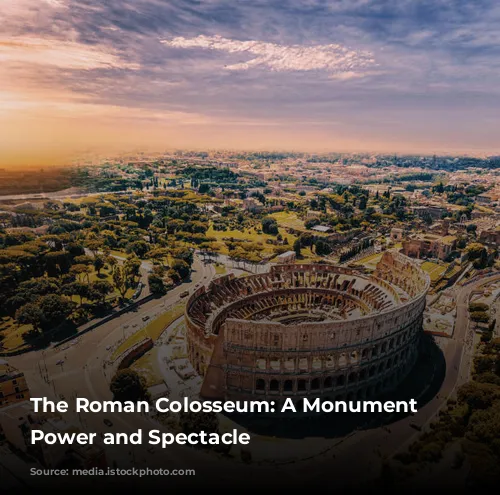Imagine a city teeming with life, a bustling metropolis where gladiators clash, wild animals roam, and the roar of the crowd echoes through the streets. This was ancient Rome, and at the heart of this vibrant city stood a colossal structure: the Flavian Amphitheatre, better known as the Colosseum. This iconic landmark stands as a testament to the Roman Empire’s power, grandeur, and the enduring fascination with spectacle.
A Colossal Creation: The Birth of a Legend
The Colosseum, a marvel of Roman engineering, was commissioned by Emperor Vespasian of the Flavian dynasty. Construction began in 70 AD, a mere eight years after the Great Fire of Rome, and was completed by his son Titus in 80 AD. Its inauguration was a spectacular affair, a hundred-day extravaganza filled with gladiatorial combat, exotic animal hunts, and breathtaking naumachiae – staged naval battles that filled the arena with water. The historian Suetonius even recorded the staggering number of animals slaughtered during this opening ceremony: a staggering 5,000!
The Name Behind the Legend
But how did the Colosseum get its name? The answer lies in the mists of time and a prophecy made by the Venerable Bede, a medieval monk. He declared: “Rome will exist as long as the Colosseum does; when the Colosseum falls so will Rome; when Rome falls so will the world.” The name “Colosseum” is thought to have been inspired by the colossal statue of Emperor Nero, the “Colossus”, which stood 35 meters tall near the amphitheatre and has since been destroyed.
An Architectural Masterpiece: The Colosseum’s Construction
The Colosseum is a testament to Roman architectural brilliance. Standing tall with four stories, it was once covered in gleaming white travertine stone, creating a majestic sight that dazzled the eyes. Its elliptical shape ensured that every spectator had a clear view of the arena, while the eighty arches on each of the first three levels were adorned with statues, adding to its grandeur.
The Romans were renowned for their innovative use of the arch, a structural element that allowed them to distribute weight efficiently and create impressive structures. Imagine the Colosseum as a series of aqueducts stacked on top of each other, showcasing the power and practicality of this architectural marvel.
From Glory to Ruin: The Colosseum’s Decline
Today, we see only a shadow of its former glory. The Colosseum, once a symbol of Roman power, now stands as a reminder of the impermanence of empires. Over time, three-fifths of the outer brick wall have crumbled, leaving a skeletal silhouette of its original majesty. The Colosseum, once an arena for gladiatorial combat, became a quarry for building materials during the Middle Ages. Popes plundered its travertine, lead, and iron to build palaces and churches, leaving behind its iconic form riddled with holes.
A Stage for Spectacle: The Colosseum’s Events
The Colosseum wasn’t just a building; it was a stage for a variety of spectacular events. Up to 70,000 spectators could be accommodated within its tiers of seats, which were cleverly inclined to provide clear views of the arena from every angle. Entry was free for Roman citizens, but seating was arranged according to social status, reflecting the hierarchical society of the time. The commoners occupied the upper tiers, while senators and the emperor graced the front row, each section divided between men and women.
Just like modern stadiums, the Colosseum had its own innovative solution for protection from the sun. The “Velarium,” a vast linen awning, was hung by a system of ropes, winches, and poles, requiring a team of 100 sailors from the Imperial fleet to maneuver it in perfect synchronization. This elaborate system created a movable shade for the audience, ensuring their comfort during the day’s performances.
The Gladiators: Heroes of the Arena
Stepping into the Colosseum, we are transported to the heart of the action. The arena floor, once made of brick and wood, has vanished, revealing the cellars that housed the machinery for the show. Here, we see the lifts and hoists with their counterweights, remnants of the special effects that brought the arena to life. Animals and gladiators were hoisted from these cellars, appearing dramatically through trapdoors, creating moments of awe and excitement for the audience.
The gladiators, the stars of the arena, were more than just fighters. They were warriors who embodied courage, skill, and entertainment. From prisoners of war to aspiring paupers, gladiators found fame and fortune in the Colosseum, becoming idols of the people. There were many types of gladiators, each armed with unique weapons and fighting styles, creating a spectacle of strength and skill.
The Legacy of the Colosseum: A Timeless Monument
The Colosseum, a monument to both brutality and entertainment, continues to captivate audiences centuries later. It serves as a reminder of the Roman Empire’s power and the enduring fascination with spectacle. Despite its transformation from a bustling arena to a weathered ruin, the Colosseum remains a powerful symbol of Rome’s history, a testament to the ingenuity of its people, and a glimpse into the heart of a civilization that once ruled the world.
As Charles Dickens aptly observed, “seeing the Colosseum means seeing the ghost of old Rome floating over the places its people walk in.” Its presence casts a long shadow, reminding us of the power and complexity of the Roman world and the enduring legacy of this remarkable structure.

